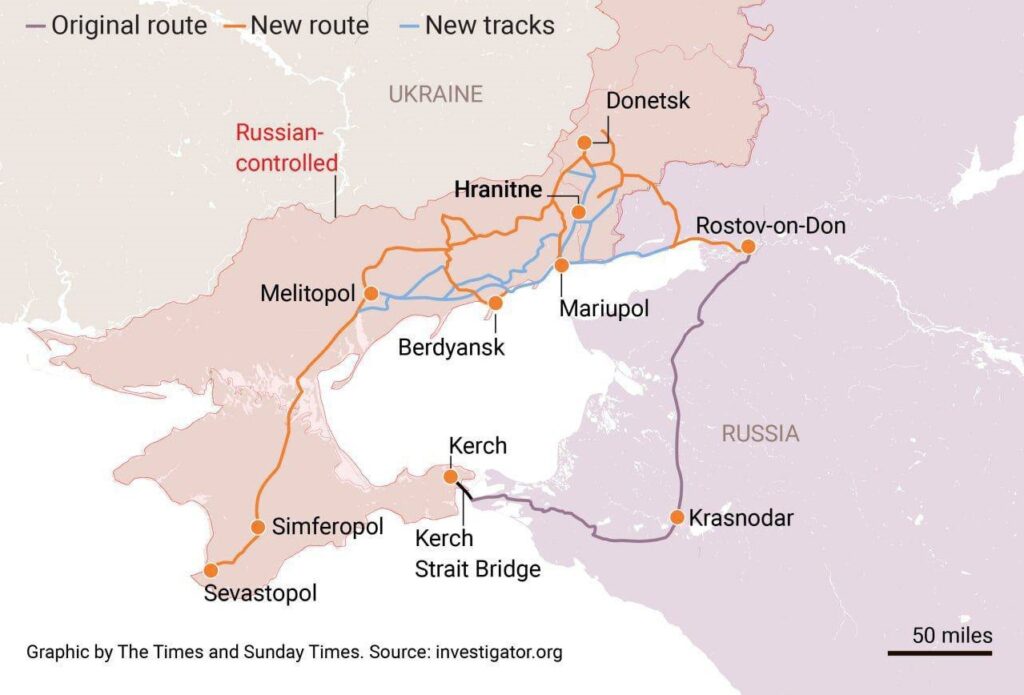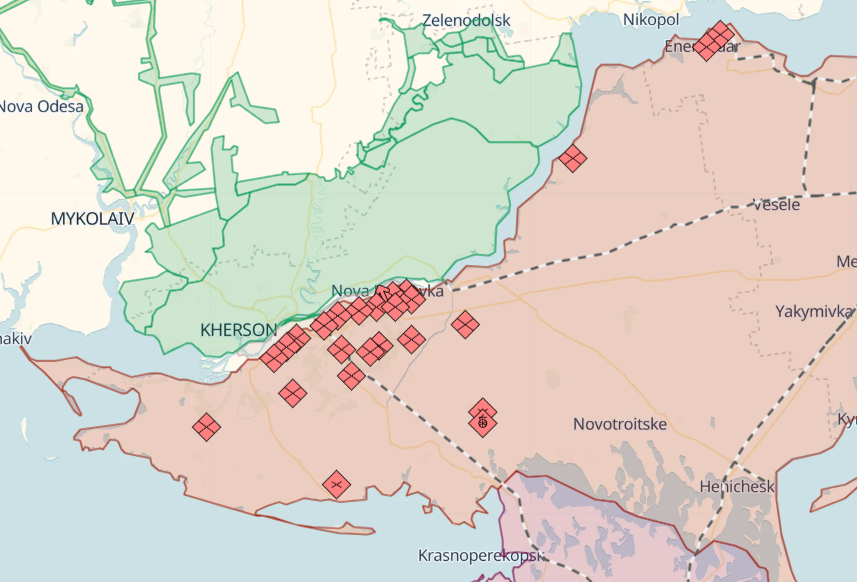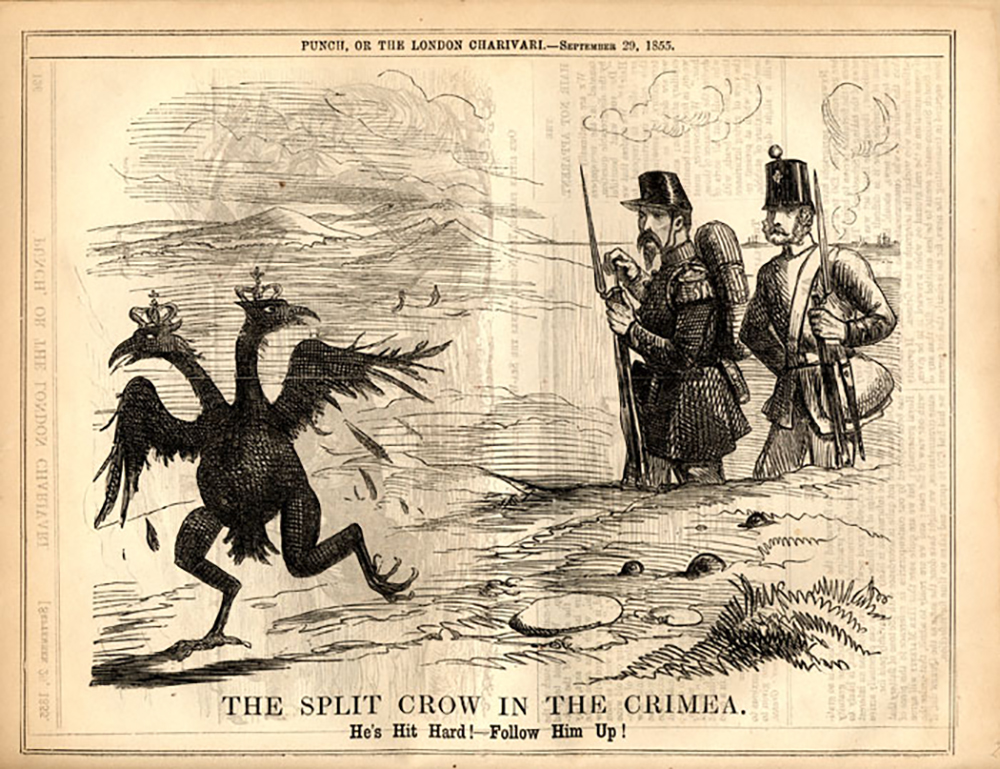Ukraine anticipates the arrival of F-16 fighter jets, a promised game-changing weapon that could swiftly alter the war's dynamics. While the exact number remains unclear, ranging from 6 to 60 aircraft, these jets represent a powerful asset unavailable to Russian forces.
Adding to the strategic importance of these developments, Ukraine's commander-in-chief, Col Gen Oleksandr Syrskyi, recently claimed a plan to reclaim Crimea exists, calling it "realistic" but a "big military secret."
Peter Zeihan, an American geopolitical strategist, suggests Ukraine may launch a rapid counteroffensive upon receiving F-16s. He points to several indicators:
- Ukrainians became much more aggressive, turning Russia's Kharkiv offensive into a killing ground;
- A favorable for Ukraine casualty ratio of 20:1 in some battles in the South
- Operations targeting Russian aircraft within Russia
- Systematic attacks on Russian air defenses in occupied Crimea, particularly S-300 and S-400 systems.
"Ukraine is degrading Russian air defenses to create a more permissive environment for F-16 operations," Zeihan explains.
Regional air superiority, lacking in Ukraine's unsuccessful 2023 counteroffensive, could be achieved with F-16s, potentially extending over most of occupied Crimea. This would enable Ukraine to sever the remaining infrastructure links from Russia to the southern front, including the damaged Kerch Bridge and a vulnerable rail system along the southern coast.
"We've been waiting for Ukraine to leverage superior speed, innovation, and reach to disrupt Russian logistics, isolate large troop concentrations, and generate the kind of political humiliation that has triggered Russia's government collapses in the past," predicts Zeihan.

However, conflicting views exist. The New York Times suggests Ukraine may not be ready for a major counteroffensive until next year, citing delays in NATO-promised aid delivery. The British think tank RUSI also anticipates Ukraine focusing on inflicting maximum damage to Russian forces and infrastructure rather than immediate territorial gains.
To clarify the likelihood of an imminent Crimean offensive, Euromaidan Press consulted several Ukrainian defense experts.
No alternative but to retake Crimea, says defense expert Mykhailo Samus
Ukrainian defense expert Mykhailo Samus argues that 2024 is "the most critical year in this war," warning against a purely defensive strategy as potentially fatal. He interprets Putin's attacks on civilian targets, such as the 8 July strike on Kyiv's Okhmatdyt Children's Hospital, as attempts to demonstrate Russia's unchecked power and Ukraine's dependence on American aid.
Samus proposes a bold counter-strategy: blockading Crimea. With only 4-5 months before potential US policy shifts following the presidential election, he emphasizes the urgency of action.
"It's crucial to achieve the best possible battlefield situation by early 2025, strengthening Ukraine's position for potential negotiations or escalation," Samus states.

Russia, recognizing this timeline, is pushing to improve its position, particularly on the Donbas front.
"Russian propaganda will claim Putin protected the 'people of Donbas' and prevented Ukraine from joining NATO. The rest is just details," Samus explains.
To counter this, Samus advocates for a swift Ukrainian counteroffensive, arguing that "grabbing Putin by Crimea" through a blockade could be the only option to force negotiations on Ukraine's terms. This strategy would involve:
- Destroying the Crimean Bridge
- Disrupting ferry crossings and sea logistics
- Cutting off the land corridor to Crimea.
Samus emphasizes that a ground operation isn't necessary; the key is the blockade. To achieve this, Ukraine needs superiority in aviation, air defense, and missile forces. With sufficient F-16s and long-range missiles, Ukraine could push back Russian aviation, control the skies, and provide cover for its forces, effectively implementing the blockade strategy.

-
How could Ukraine effectively seal off Crimea?
The proposed Crimean blockade strategy envisions a bold offensive, for instance, in October. It begins with a surgical strike against Russian air defenses, particularly targeting key bases like in Sevastopol.
“With the skies cleared, Ukrainian aviation would launch an intensive bombing campaign against military targets and troop concentrations, echoing tactics from World War II,” the expert explains.
This blockade would swiftly create a dual crisis in Crimea: a growing humanitarian challenge for the trapped civilian population, and a logistical nightmare for Russian troops cut off from supply lines.
Such a decisive move would render Putin's current negotiation demands obsolete.
“A blockaded Crimea puts Ukraine in a position of strength. If Russian forces can endure there for six months, so can we. This would show Trump we're dictating terms, making us a more appealing partner," Samus argues.
Importantly, this blockade strategy doesn't necessitate an immediate ground offensive to liberate Crimea. The total isolation of the peninsula alone creates untenable conditions for Russian occupation.
-
How could Ukraine de-occupy Crimea?
The full de-occupation of Crimea is envisioned as a meticulous operation that could span a year or more. At its core are ambitious amphibious assaults across the Dnipro river into the Russian-occupied part of Kherson Oblast, a plan contingent on achieving air superiority.
"This is a high-risk operation," warns the expert. "Military history has few examples of successful amphibious landings. It requires meticulous preparation and execution - no rush, but overwhelming force - to inflict maximum strategic defeat on the Russians."

The strategy unfolds in stages: Special Forces and Marines establish initial beachheads, followed by armored units crossing on pontoon bridges to form powerful strike forces. Crucially, this operation demands utmost secrecy.
"This operation must be known to very few, while the main efforts should appear focused elsewhere, such as the Donbas, to draw more Russian forces there," the expert advises.
The plan accounts for potential Russian resistance, particularly in Sevastopol. However, isolated from naval support and vulnerable to Ukraine's sea drones and air power, such resistance would be unsustainable. Ukraine has already effectively achieved a sea blockade, even without the corvettes and frigates still under construction in Türkiye.
"F-16s are crucial, but they're just one piece of the puzzle," the expert explains.
Equally crucial is a multi-layered air defense system to protect landing forces from various threats, including ballistic missiles and drones.
Notably, the expert believes the amphibious operation across the Dnipro river was intended to kickstart Ukraine's counteroffensive last year. But the Russians' destruction of the Kakhovka Dam derailed those plans. Now, they can't blow up another dam, so Ukraine has the opportunity to prepare thoroughly.
-
Echoes of the past: A modern Crimean War unfolds
The current conflict bears striking parallels to the 19th-century Crimean War, both in its geopolitical scope and potential consequences for Russia. Just as in 1853, when Russia pushed into Ottoman spheres of influence, today's conflict sees Russia expanding southwestward.
"What began in 2014 with celebrations in occupied Sevastopol could end with Russia achieving nothing in Donbas, losing Crimea, and severing ties with the Western world," the expert observes. This trajectory, he argues, leads to increased dependence on China and economic turmoil for Russia.
A successful Ukrainian blockade of Crimea could be a turning point, potentially sparking discontent among Russian elites and unrest reminiscent of Prigozhin's aborted coup. The analyst draws historical parallels to the fate of Tsar Nicholas I during the original Crimean War.

The expert also highlights the potential impact of drastically lower oil prices, a move Trump has repeatedly promised if re-elected.
"Russia's ability to finance the war is the core issue. While oil remains high and China and India continue buying, Russia has funds. But a price crash, coupled with the loss of Crimea, could be a game-changer," the analyst notes.
Looking ahead to late 2025, the analyst foresees a critical juncture.
"An oil price collapse coupled with the loss of Crimea could be transformative. Russian elites, facing failures in Ukraine and sudden economic constraints, may find themselves in an untenable position," he predicts.
I'll eat my words if it happens, says defense expert Mykola Bielieskov
Mykola Bielieskov, a research fellow at the National Institute for Strategic Studies, offers a contrasting view to Mykhailo Samus, asserting that Ukraine is limited to strategic defense in 2024.
Bielieskov firmly rejects the possibility of a near-term Ukrainian offensive, arguing that the expected one or two squadrons of F-16s are insufficient.
"I understand the desire for active measures, but this is currently beyond our capabilities," he states.
He warns that predictions of an offensive are not only unfounded but potentially harmful, creating unrealistic expectations. Despite Zelenskyy's announcement of 14 new brigades, Bielieskov sees this as signaling to the West rather than offensive preparation. The priority, he argues, is stabilizing the front line.
"Ukraine occasionally floats offensive plans to deter Western pressure for negotiations with Russia where peace would come at Ukraine's expense," the expert explains.
He acknowledges the need to show offensive success but deems it currently impossible, raising concerns about increasing risks and the challenge of meeting expectations.
"Two squadrons of F-16s armed with JDAMs, HARMs, and air-to-air missiles won't create a dramatic breakthrough. If they do, I'll publicly admit my professional incompetence," the expert pledged.

Fortress Crimea too tough to crack with current aid, claims defense expert Ivan Kyrychevskyi
Defense expert Ivan Kyrychevskyi also challenges predictions that F-16 deliveries will enable a swift Ukrainian offensive to isolate Crimea. The expert argues that such a scenario is based on a misunderstanding of Russia's resource superiority.
- Air superiority: Russia deploys up to 100 Su-35S and 100 MiG-31BM fighters, capable of engaging targets beyond F-16 ranges using R-37M long-range air-to-air missiles.
- Missile arsenal: Russia's vast missile stockpile allows for tactics like using up to 10,000 S-300 surface-to-air missiles for ground attacks on Ukrainian border areas, despite this being an expensive misuse of the weapon system.
- Ground forces: Russia has a substantial numerical advantage in tanks, armored vehicles, and artillery pieces.
Kyrychevskyi emphasizes that it is unrealistic to expect a swift Ukrainian counteroffensive with the F-16s alone.
“For a successful offensive, Ukraine needs not just an F-16 squadron, but all the Abrams tanks and Bradley IFVs available in the US Army. They have several thousand of these, and that’s what we need,” the expert says.
He describes Crimea as a fortress, fortified since 2014 with additional troops and equipment. Russians moved T-90 and T-62 tanks from the Urals to Crimea between 2014-2017, even before the Crimean Bridge opened. This was costly, but they did it.
“To cut off Crimea logistically, Ukraine needs at least 200 modern aircraft, advanced missiles, and all available ATACMS. A few dozen ATACMS won’t suffice,” Kyrychevskyi explains.
He concludes that current aid levels are inadequate.
“Talk of managing with limited F-16s or missiles masks the West’s reluctance to provide Ukraine with truly sufficient armaments," the experts say.

****
Experts debate the potential impact of F-16 fighter jets in Ukraine. While some view them as game-changers for air superiority and Crimean strategy, others argue that limited numbers are insufficient to turn the tide.
The 2024 US presidential election looms large in strategic considerations. Experts emphasize the need for Ukraine to strengthen its position before potential policy shifts, possibly to deter pressure for unfavorable negotiations.
2024 is considered pivotal, with Ukraine's actions—whether offensive operations or resource buildup—likely to shape the war's long-term trajectory and influence future peace talks.
Read more:
- Blinken: F-16s en route to Ukraine
- F-16s alone won't win war, Ukrainian FM Kuleba tells CNN
- Russian firm offers $170,000 bounty for destruction of first F-16 in Ukraine
- Greece to transfer 32 decommissioned F-16s to Ukraine
- ISW: Ukraine continue targeting Russian air defense systems to set conditions to field F-16s

